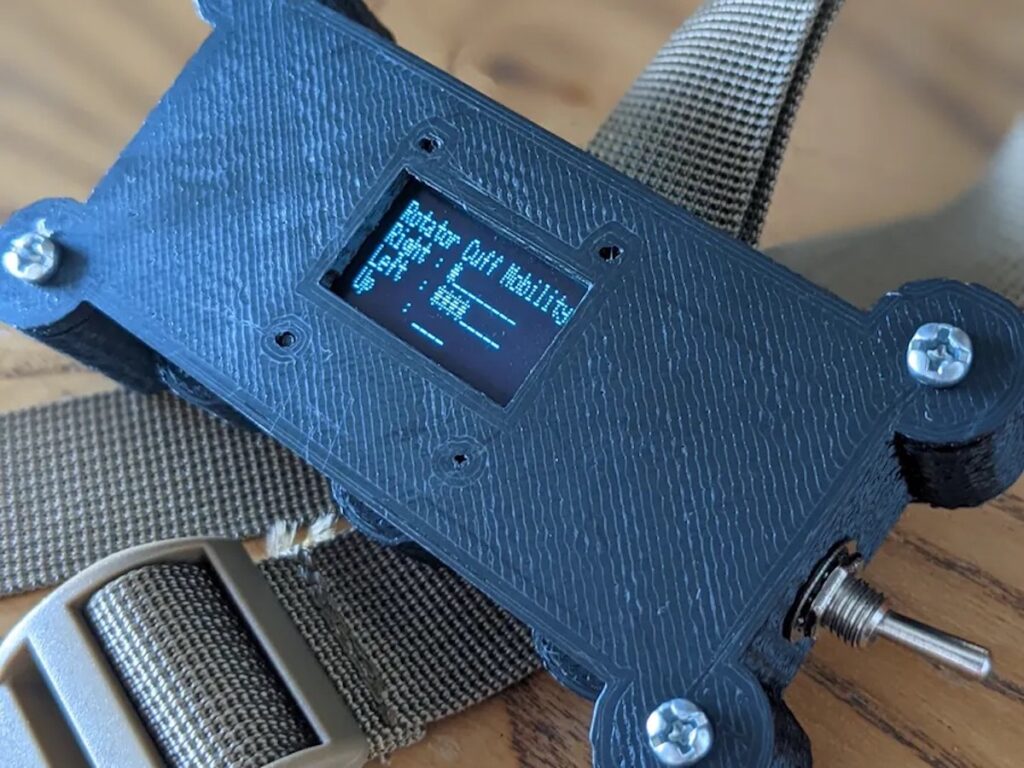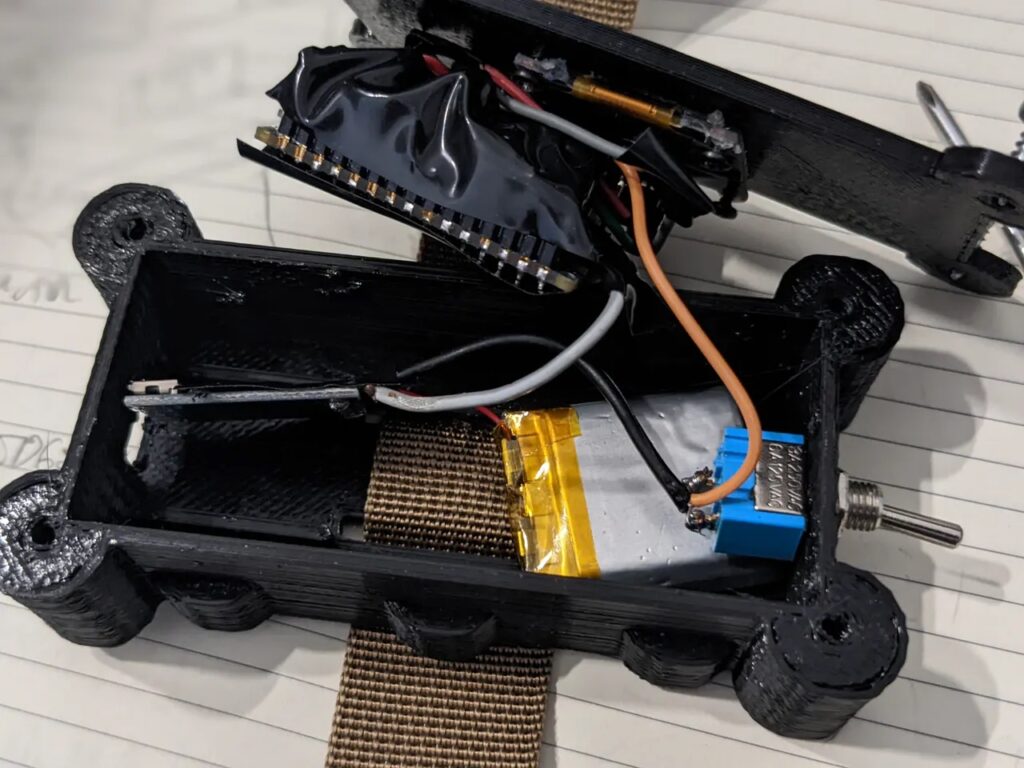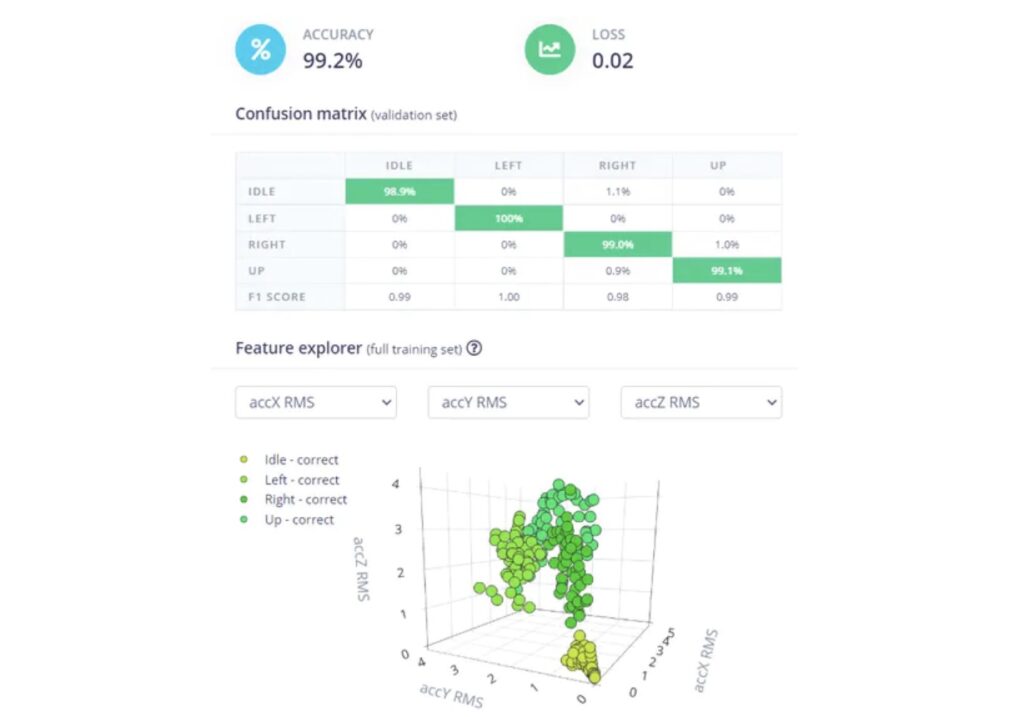Arduino device uses tinyML to help wearers recover from shoulder injury

Shoulder injuries can be quite complex and require months of careful physical therapy to overcome, which is what led to Roni Bandini to build a tinyML-powered wearable that monitors a patient’s rotator cuff movements to aid in the recovery process. His system is designed around a Nano 33 BLE Sense and its onboard accelerometer that measures both the types and frequencies of certain shoulder motions.
After 3D printing a small case to house the Arduino along with a battery pack and an OLED display, Bandini created a new project using the Edge Impulse Studio. The impulse takes in time-series three-axis accelerometer data, runs it through a spectral analysis block, and then infers the current movement being performed by the wearer.

Once switched on, the system initializes a set of three movement counts to zero: right, left, and up, while the last type, idle, is not counted. Then throughout the day, the patient is encouraged to perform various exercises in order to fill up the bars completely. The eventual goal is to make steady progress towards having a recovered rotator cuff joint with a larger range of motion than immediately after the injury.

Bandini’s video explaining this shoulder recovery system can be viewed below, and the project’s design files/code can be found here on Hackster.io.